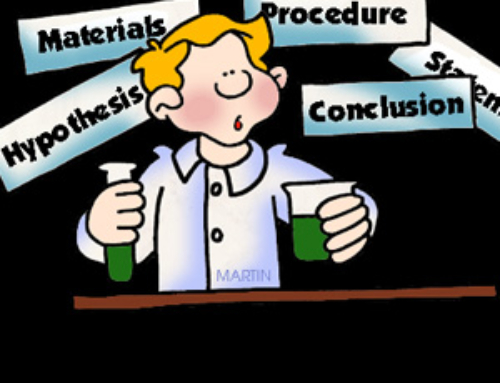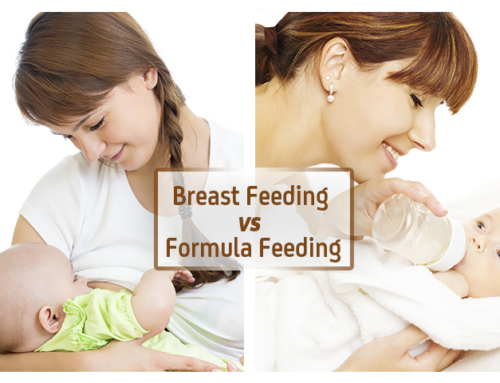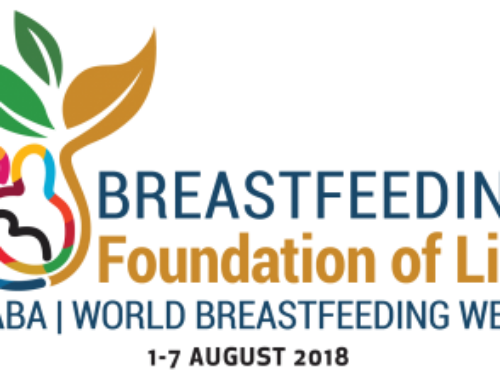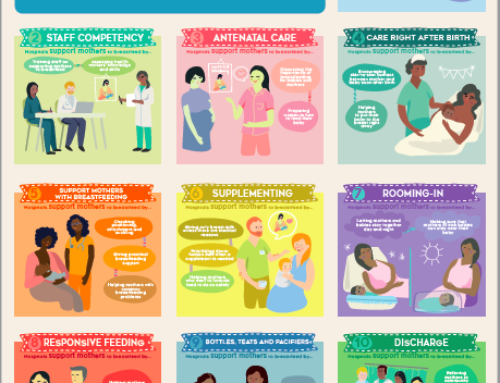Herein, the researchers examined studies from 1960 through 2014. To be included, the studies had to include measures of breastfeeding and incidents of childhood leukemia, breastfeeding duration in months at least to 6 months of age, the studies had to be case-control (which means the control group – those without childhood leukemia – is based on certain demographic information of the children with childhood leukemia and what that information is will vary study to study), and been published in peer-reviewed journals. Only 25 articles met the criteria (an additional 26 were not case control and thus eliminated) and of these only 18 were included after a validity check (this is the measure of quality). They used a standardized quality assessment that is often used in meta-analytic research.
What did they find? Well, they found that any breastfeeding for six months or longer was associated with a 19% reduction of risk for childhood leukemia compared to those who do not breastfeed or who breastfeed for less than six months. This is equivalent to 23.5% increased risk for those who do not breastfeed for six months or more. When cases in which leukemia was diagnosed in the first year were excluded (as they are often attributed to prenatal influences), any breastfeeding for 6 months or more was associated with a 17% reduction of risk (or a 20.5% increased risk for those who do not breastfeed for 6 months). The results were all similar when only the highest quality studies were included, when only the largest scale studies were included, and when only those in developed nations were included.
There were a couple additional analyses worth discussing though. First, when ever breastfed versus some breastfeeding (even less than 6 months) was analyzed, the result was still significant with an 11% reduction in risk (or 12.4% increased risk for no breastfeeding), but lower than when longer-duration breastfeeding was considered. Second, when the analyses were done by childhood leukemia subtype – ALL or AML – there was a significant effect for ALL (18% reduction in risk by minimum of 6 months breastfeeding/22% increased risk by not reaching 6 months breastfeeding) but not for AML (even though the odds ratio given was lower than for ALL, the confidence interval was larger suggesting much more variation in the individual study findings).
There you have it. The study in a nutshell.
Now, the questions and concerns that people have. I have heard lots of complaints about this study, ranging from concern about not including confounds to how it shames parents. I want to address some of these here.
If they didn’t control for SES, how can they say any of these results are to do with breastfeeding and not other factors to do with SES?
The first issue with this concern is that in some ways, SES is controlled for, depending on each individual study. A case control study means that relevant factors are controlled for by making sure these factors match between the case and the control subjects. Now, I do not doubt that some of the earlier articles would have likely ignored SES as a measure of interest and the response rates do suggest that perhaps higher SES controls were more likely to respond. However, the rates when looking at only developed countries with a Western lifestyle versus other countries were pretty much identical suggesting that SES is not as big as a concern as some might believe. It is not out of the question, though, that the results may be somewhat liberally biased in terms of SES.
Why is there no analysis for exclusive breastfeeding?
Although there may be a liberal bias for SES (though again, less of a concern than we would imagine given the follow-up analyses), there is a definite concern that they were unable to ascertain the effect of exclusive breastfeeding for certain periods. As I’ve reviewed here, exclusivity of breastfeeding has been associated with a reduction in risk for various forms of childhood cancer. The problem is that there are few people that actually breastfeed exclusively – especially as the studies spanned a time period where breastfeeding at all was even rarer than it is today. However, as the effects found herein are stronger for breastfeeding at least 6 months versus ever, it is likely that the closer we get to the biological norm of exclusive breastfeeding for approximately 6 months followed by complementary nursing with solids for around 2 years, the lower the risk would come up as. You can read more on this issue here.
Indeed, the authors suggest this is a big limitation and is expected to have implications for these results, with exclusive breastfeeding conferring even more protection. As stated by the authors, “misclassification might weaken the association between breastfeeding and lower risk for childhood leukemia”[1]. So yes, this is a problem, but one which would bias the results conservatively.
The absolute risk of childhood leukemia is so low that a further reduction of around 20% isn’t really a big deal. So why all the fuss?
Actually, from a public policy perspective, 20% is a huge reduction. Yes, the absolute risk of childhood leukemia is low (175,000 new cases worldwide each year), but it’s also on the increase (increasing by .9% each year). If there is a measure that can help curb this, then politicians and health care workers would be truly remiss to ignore it. Remember, research isn’t there just to speak to individual families, it speaks to populations of people and helps us understand both the risks we take individually and what kind of systems are needed in a society.
If breastfeeding rates are increasing and leukemia is increasing, there can’t really be a big relationship can there?
Unfortunately many people believe this type of argument, and yet it’s not quite how it works. The only way this would make sense is if there were an absolute and causal relationship between breastfeeding and leukemia, and there isn’t. Childhood leukemia may be on the rise due to a variety of factors, including, but not limited to, increasing exposure to toxins and exposure to viruses.
One of the current models that is used to explain the etiology of childhood leukemia is the Infective Agent Theory in which children an in-utero genetic mutation causes a genetic predisposition to cancer following exposure to a virus or infection that activates this genetic tendency. The exposure to various viruses or infections may be on the increase, meaning more genetically predisposed children are influenced. This would be regardless of breastfeeding status in the population.
Where breastfeeding comes into play is how it may help fight certain infections thus muting the activation of this genetic predisposition. Indeed, the various hypothesized mechanisms identified by the researchers speak to these biological and immune-building properties of breastmilk (which I will cover in more detail below). However, no matter how good these properties are, they cannot stop exposure to certain infections and thus the more chances for infection, the more the rates should continue to rise. Notably, no one is saying that breastfeeding is the only solution to the childhood leukemia problem.
How would this relationship even work?
The researchers offer a few possible explanations all of which will now need to be researched which may exist together or separately. Notably, breast milk contains antibodies that helps promote a healthy microbiome in the intestine. The presence of antibodies means that a breastfed baby may have a better chance of fighting off exposure to the infections that may activate a genetic predisposition to childhood leukemia. Furhtermore, the gut microbiome influences overall health and immunology and how breastfeeding provides the gut with the appropriate flora for the gut which promotes proper responses to pathogens. There is also the fact that the pH level in the stomach of breastfed babies has been found to be better for the promotion of a certain type of protein-lipid that has been found to induce death in certain tumor cells. Finally, breast milk also contains stem cells which may provide active immunity in the different organs they migrate to. It’s unclear if all of these are factors or only some, but there are multiple ways in which this relationship makes sense as causal.
Why are they even doing this research when all it does is shame mothers that couldn’t breastfeed? Why can’t they focus on research whereby real change could happen?
This type of comment implies ignorance about the research process. Why does this research occur? Because despite previous meta-analyses also finding a link between breastfeeding and childhood leukemia, people still deny the existence of such a link (yes, multiple meta-analyses have found a reduction of risk of breastfeeding/increased risk of formula use on childhood leukemia). The current meta-analysis was able to include newer studies that control for more variables than older studies, making it more current and relevant. Why does this research not focus on the mechanisms? Because before we can even start to analyze mechanisms that might help make better formula or find alternatives to breastfeeding that help children, they need to first ascertain that there is a link. And have people accept it. If people continue to cry wolf to this type of research, then we are left with the conclusion that further exploration isn’t important or valuable. If this research isn’t done, there’s no mechanism to even look for!
Furthermore, this type of comment ignores the very real issue that this is the type of research that impacts policy. Now, some people choose to formula feed, but a sizeable number of women who want to breastfeed have that ended prematurely and not by their own wishes. Policy is the area where we may start to see real positive changes, but we need to give politicians and government the impetus to do the right thing. Without this type of research, they aren’t likely to work towards changes that help women and families.
Finally, I’ve said this before and I’ll unfortunately likely have to say it again: If you believe that research is done in order to “shame” you, you have to check your ego at the door. This world isn’t only about you and your choices or lack thereof. Research is there to help all of us and finding this type of link may result in changes that save lives.
If you’re looking for help breastfeeding, please check out any of these books:
[amazon_image id=”B009R53OZ2″ link=”true” target=”_blank” size=”medium” ]Dr. Jack Newman’s Guide to Breastfeeding: Revised Edition[/amazon_image] [amazon_image id=”0307345580″ link=”true” target=”_blank” size=”medium” ]The Ultimate Breastfeeding Book of Answers: The Most Comprehensive Problem-Solving Guide to Breastfeeding from the Foremost Expert in North America, Revised & Updated Edition[/amazon_image] [amazon_image id=”1558328491″ link=”true” target=”_blank” size=”medium” ]The Nursing Mother’s Companion – 7th Edition: The Breastfeeding Book Mothers Trust, from Pregnancy through Weaning[/amazon_image] [amazon_image id=”0345518446″ link=”true” target=”_blank” size=”medium” ]The Womanly Art of Breastfeeding[/amazon_image] [amazon_image id=”0553384295″ link=”true” target=”_blank” size=”medium” ]Ina May’s Guide to Breastfeeding[/amazon_image]_____________________________________
[1] Amitay EL, Keinan-Boker L. Breastfeeding and childhood leukemia incidence: a meta-analysis and systematic review. JAMA Pediatrics 2015; 169: e151025.







[…] (of interventies of ‘verbeteringen’) daarop in. Dit keer liep ik tegen dit artikel aan: Breastfeeding and Childhood Leukemia. In dit artikel wordt een meta-analyse van onderzoeken over ”wel of geen borstvoeding en de […]